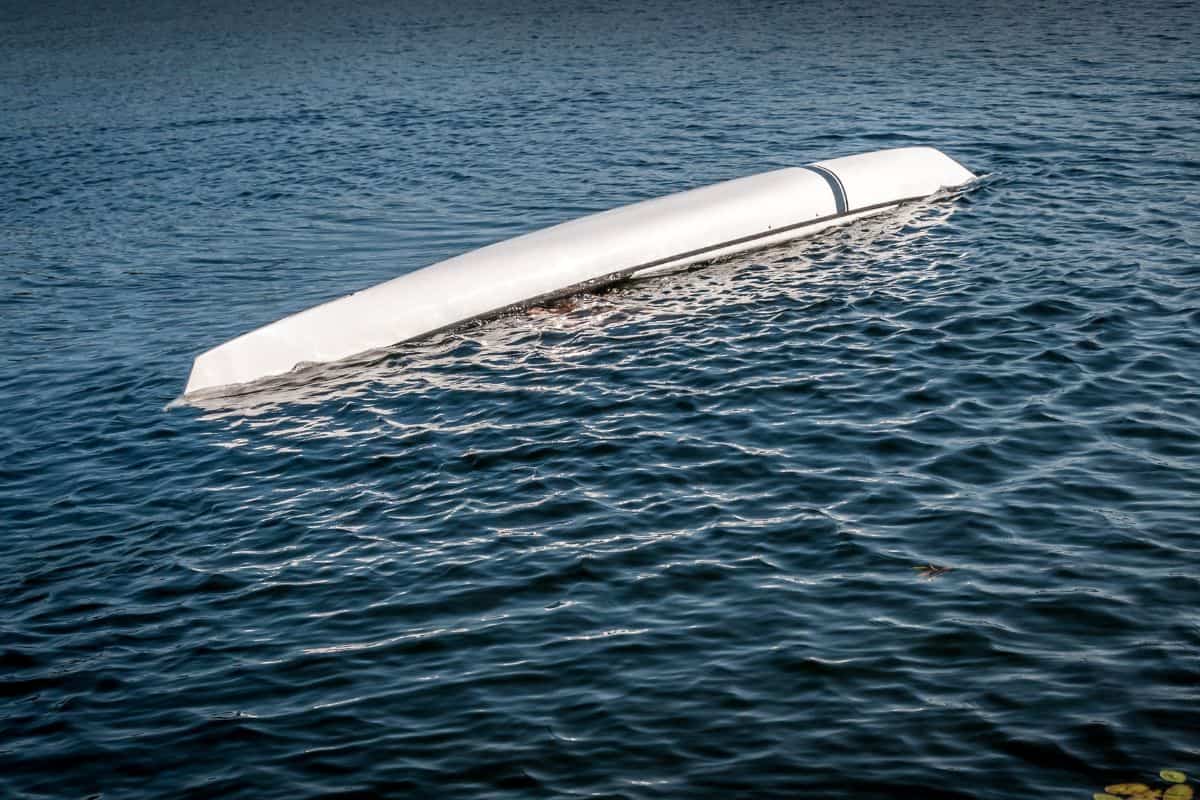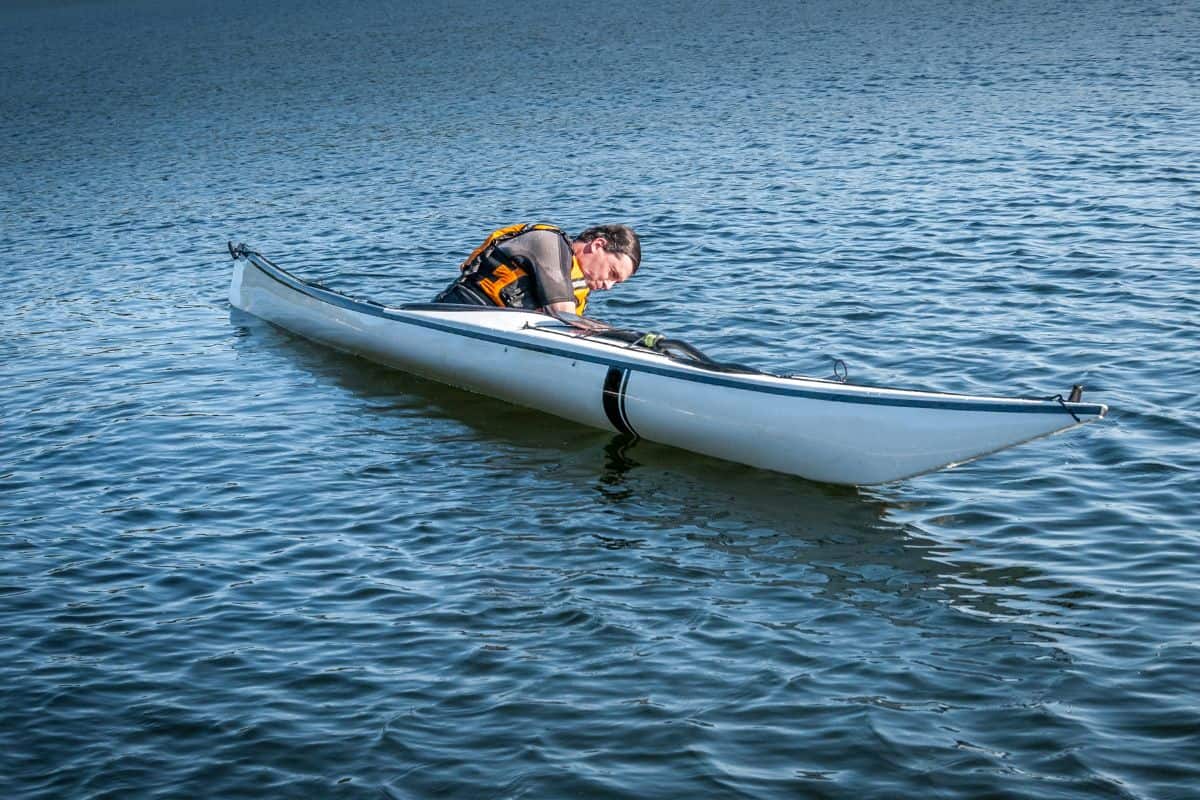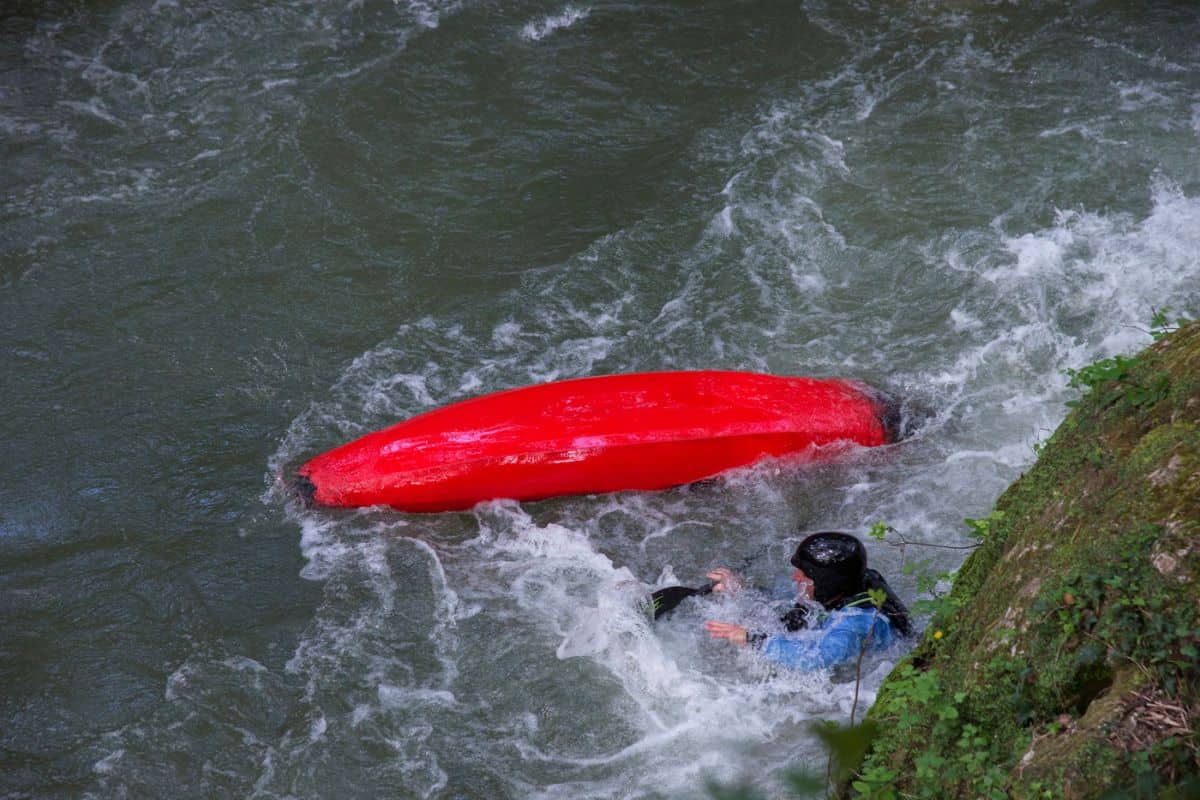Capsizing while kayaking can be a harrowing experience, especially if you’re trapped inside your sit-inside kayak’s cockpit. In such situations, knowing how to perform a kayak wet exit – the maneuver used to exit the kayak while underwater – is an essential safety skill that could save your life.
A wet exit involves removing your spray skirt and exiting the kayak’s cockpit while submerged. It’s a crucial technique that every sit-inside kayaker should master before venturing into more challenging waters.
In this guide, we’ll break down the steps involved in executing a successful kayak wet exit, including:
- Attempting to prevent a capsize through bracing techniques
- Preparing for a wet exit by taking a deep breath and leaning forward
- Removing the spray skirt and exiting the cockpit while underwater
- Resurfacing and recovering your kayak
We’ll also cover:
- The importance of practicing wet exits in a controlled environment
- Essential safety gear for sit-inside kayaking
- Strategies for remaining calm and avoiding panic during a capsize
By the end of this article, you’ll have a thorough understanding of how to perform a kayak wet exit and be better prepared to handle a capsize situation with confidence and safety.
Key Takeaways
- What is a kayak wet exit? A wet exit is an essential safety skill for anyone who paddles a sit-inside kayak. It refers to the process of removing the spray skirt and then exiting the kayak’s cockpit while underwater.
- Why you need to know how to wet exit a kayak: Learning to perform a wet exit is an essential safety skill that helps you recover from a capsize. In addition, practicing this maneuver in a controlled environment will make you comfortable with being upside-down underwater – and help you remain calm.
- How to wet exit a kayak? Always try to perform a brace and prevent the capsize. If that fails, the wet exit process is as follows; proceed by leaning forward, locating the grab loop, detaching the spray skirt – and pushing yourself out of the cockpit.
What Is A Wet Exit In A Kayak?

The so-called “wet exit” refers to the essential kayaking maneuver of exiting a kayak following a capsize. The technique is most commonly associated with sit-in kayaks and involves removing the spray skirt and exiting the cockpit underwater.
Why Should You Learn How To Wet Exit A Kayak?
Learning how to perform a wet exit is mandatory for anyone paddling a sit-inside kayak, such as touring and whitewater kayaks, where spray skirts are commonly included in the paddling attire – and it’s pretty obvious why:
When you capsize in a recreational sit-on-top kayak, such as a fishing or inflatable kayak, you will simply fall out of it – and when that happens, your only concern will be how to recover and climb back onboard your ‘yak.
But when you capsize in a sit-in kayak – and especially when you are wearing a spray skirt – that whole ordeal looks a lot different. And it’s not uncommon for people to start panicking when they find themselves underwater, trapped in a capsized ‘yak.
Panic is your worst enemy, though.
So, on that note, I believe that mastering this maneuver may help you get more comfortable with the idea of being underwater. But more importantly, it’s a matter of staying safe on the water and knowing how to recover from a capsize.
How To Wet Exit A Kayak

We’re talking about worst-case-scenario stuff here, so I’d like to remind you that our brains have one heck of a sense of preservation. That is to say; when push comes to shove, you’ll figure out how to exit your kayak after a capsize – even without formal training.
But there’s a difference between scrambling to do it and knowing how to perform it safely – and it generally comes down to training.
Now’s not the time to rely on sheer luck and “divine intervention.”
Wet Exit Kayak Technique: Step-By-Step Guide
Here’s how to perform a kayak wet exit, broken down into four simple steps:
1. Brace To Prevent The Capsize (If Possible)
You can’t always avoid capsizing – but an emergency maneuver known as kayak bracing could potentially prevent it when performed skillfully and at the right moment.
That’s right:
There’s a way to “reverse” a capsize and prevent your kayak from rolling over.
There are two versions of the brace stroke – low brace and high brace – with the main difference being how you were holding the paddle when your ‘yak started rolling sideways. The basic idea, however, remains the same:
With the paddle blade parallel to the water, edge your ‘yak toward the brace side, reach out, and “slap” the water with the blade to push against the surface, reverse the capsize momentum, and get back into a stable, upright position.
2. Take A Deep Breath & Lean Forward
If your kayak bracing attempts fail and you are about to capsize, take a deep breath and lean as far forward as possible before you go underwater. By leaning forward, you not only decrease the chances of hitting your head but set yourself up for a quick and easy exit, too.
Preferably, you should hold onto your paddle – tuck it under your arm or on the side of the kayak – but try not to obsess about losing it. You can always retrieve it once you get the situation under control.
When you flip over, the most important thing is to remain calm. So, I recommend counting to three; it will help you get your bearings and figure out your next move.
3. Locate The Grab Loop & Release The Spray Skirt
After the one-two-three count, lean forward as if you are going to kiss the deck. Your next goal is to locate the spray skirt’s grab loop with your free hand – and the best way to do that is to grab the cockpit coaming with your hands and slide them toward the front, where the loop should be.
When you find the loop, grab it and give it a good yank. And don’t worry – even if your spray skirt is super-snug, it will come right off. But in case you’re struggling to remove it, try pulling the loop forward, towards the kayak’s bow, to release the front lip, and then pull up; that should do it.
4. Exit The Kayak & Get To The Surface
With the spray skirt off, you can proceed to safely exit the ‘yak.
Grab the sides of the cockpit’s coaming, tuck your chin, bring your knees together – this will help you disengage from the thigh braces – and push off of the coaming.
You should slide right out of the cockpit, doing a sort of “forward roll” on your way out.
Oh, and one more thing:
It may feel like an eternity, but the whole process really only takes a few seconds. You will reach the surface before you know it – especially with a life jacket on.
Practice In A Safe Environment
The wet exit technique sounds simple in theory, and yes, it is relatively easy to get the hang of it. That said, reading about it and actually performing it – especially while you are upside-down and underwater – are two very different things.
So, as with any other kayaking technique and maneuver, my advice to you is:
Practice, practice, practice – then practice some more.
If you don’t already have a kayaking instructor, now would be the time to find one and book your lesson. Alternatively, you could ask one of your paddling buddies for assistance – but make sure that they’re experienced enough and capable of pulling you out of the kayak if things don’t go as planned.
On a related note:
I recommend sticking to a safe and controlled environment while you work on your technique. A pool, for instance, would be ideal; you won’t have to worry about cold water, currents, and any other potential hazards.
Very few public pools will allow you to bring a kayak, though. So, if that is not an option, you can also practice in a lake – or even a calm, slow-moving river.
As long as the water’s deep enough for you to flip the kayak over without banging your head but still shallow enough to allow you to stand up and swim to shore, it should be fine.
Re-Entry: How To Get Back In A Kayak After A Wet Exit

There are several ways to re-enter a kayak from the water – and your approach to self-rescue will largely depend on what type of kayak you’re in. You see, the “recovery process” can be a bit more complicated with a sit-in kayak simply because they tend to fill up with water.
Here are the basics of re-entering your kayak from the water:
- First, you’ll need to right your kayak. Swim to its side, hold onto the edge of the cockpit rim – and push upwards to flip your kayak up and away from you.
- Get hold of your paddle and, if possible, secure it to the boat.
- With the kayak right-side up, you can get to the actual re-entry part. Reach across it and grab the opposite side of the hull – and, with a strong kick, pull yourself up onto the ‘yak so that you’re laying across it belly-down.
- Roll over and reposition yourself so you can slide your legs back into the cockpit – and get back into the seat.
- Depending on how much water your ‘yak has taken in, you can bail out the excess water with a bilge pump or sponge – or head to shore to empty the cockpit.
And that’s it – you’re back in business!
Kayak Wet Exit: Additional Safety Tips

The wet exit and re-entry techniques should be relatively easy to learn. That said, you can never know when the Universe and Mother Nature might team up and throw you a curve ball – which is why you need to prioritize on-the-water safety.
On that note, I have a few tips for you:
- Always wear a PFD, regardless of your swimming skills or how confident you feel in the water. It could save your life when you capsize – and there’s no excuse for not wearing it.
- Anticipate immersion and dress for it. Sudden exposure to cold water could send you into cold shock and make you panic, which will make it a lot harder to perform a wet exit.
- Wear a helmet. It might seem like an unnecessary piece of gear for a casual outing – but you never know how shallow the water is or what could be hiding under the surface. And protecting your head is crucial.
- Keep practicing until it feels like second nature to you. Remember that panic is your worst enemy in the water and will only make things worse and affect your ability to make sound decisions. So, you should continue practicing your wet exits until you feel absolutely comfortable and confident in your abilities.
- Learn how to breathe properly. Your first instinct will likely be to hold your breath – but you want to let the air consistently trickle out of the nose to prevent water from getting in while you’re upside-down.
- Check your equipment before a trip. I generally recommend a quick pre-trip inspection of your kayak and PFD. However, in this particular case, you should also pay attention to the spray skirt. Make sure that the grab loop is in the front and easily accessible, and not tucked in under the cockpit’s rim.
- Notify your group that you require assistance. After you capsize, try to lean forward, get your hands out of the water, and bang on the bottom of the kayak to let the others in the group know you flipped over and need assistance. If someone is close by, you could even attempt an Eskimo rescue.
Kayak Wet Exit: Summary
Kayak wet exit is the maneuver used to exit the sit-inside kayak’s cockpit while underwater. It is an essential safety skill all paddlers should master before heading out to more serious waters.
Here’s a quick summary of the steps needed to perform a wet exit:
- Attempt to perform an emergency maneuver known as kayak bracing to avoid capsizing.
- If flipping over is inevitable, lean forward and take a deep breath before you capsize and go underwater.
- Grab the sides of the cockpit’s coaming and locate the spray skirt’s grab loop.
- Release the spray skirt by pulling on the grab loop.
- Place your hands on the sides of the cockpit’s opening and push off of it to exit the kayak and get to the surface.
Frequently Asked Questions
Is a wet exit necessary for all types of kayaks?
No, a wet exit is only necessary for sit-inside kayaks, such as touring and whitewater kayaks, i.e. those with an enclosed cockpit that have a spray skirt. In recreational, sit-on-top kayaks, you will simply fall out of the kayak in the event of a capsize.
Is it possible to self-rescue in a kayak?
Yes, it is possible to self-rescue in a kayak by using techniques such as a wet exit or performing a Eskimo roll to ‘right’ the kayak. It is important to practice both of these techniques in a controlled environment so that you have a well established, tried and tested plan in place in case you do capsize out on the water.
Will a kayak sink if filled with water?
It depends. It’s virtually impossible for a sit-on-top kayak to sink due to its sealed hull design that does not allow any water in and traps air inside, adding to its buoyancy. Things are a bit different with sit-in kayaks, though. When you capsize, the water rushes in, filling up the kayak’s cockpit – and unless the kayak has bulkheads, it could sink.
Do kayaks flip easily?
Kayaks are generally not easy to flip over – although the risk is never actually zero. The truth is, it depends on the conditions and the type of kayak you are in. Some kayaks offer more primary stability – while others can feel tippy at first but resist capsizing quite well due to their secondary stability.
